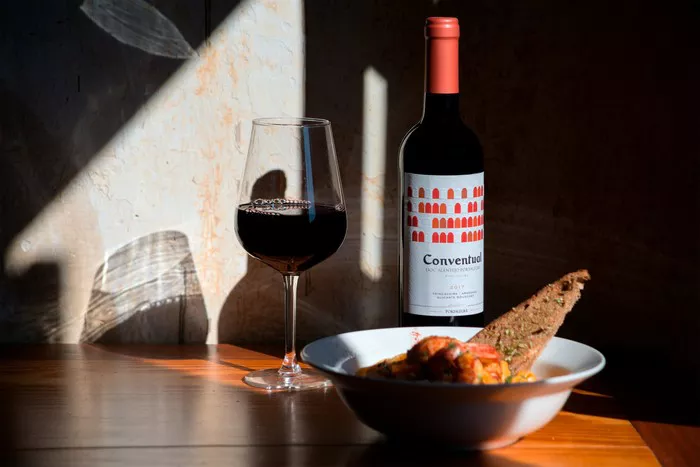Chardonnay, often referred to as the “winemaker’s grape,” is a wine varietal that has gained worldwide popularity for its adaptability and distinctive characteristics. In this comprehensive guide, we will explore the unique traits and flavors that make Chardonnay a beloved choice among wine enthusiasts.
The Origin of Chardonnay: A French Legacy
1. French Roots:
Chardonnay finds its roots in the Burgundy region of France, where it has been cultivated for centuries. It is considered one of the noble grape varieties of the world.
2. Global Spread:
Today, Chardonnay is grown in wine regions across the globe, from California’s Napa Valley to the vineyards of Australia, creating diverse expressions of the grape.
Flavor Profile: A World of Possibilities
1. Fruit Notes:
Chardonnay offers a wide range of fruit flavors, from crisp green apple and citrus to ripe tropical fruits like pineapple and mango.
2. Oak Influence:
One of Chardonnay’s distinguishing features is its susceptibility to oak aging, which can impart notes of vanilla, caramel, and butter to the wine.
3. Minerality:
Depending on the terroir, Chardonnay can exhibit minerality, with hints of flint, wet stone, and a subtle salinity that adds complexity to the palate.
Styles of Chardonnay: Versatility Personified
1. Unoaked Chardonnay:
Unoaked Chardonnay is known for its bright, crisp, and fruit-forward profile. It allows the pure expression of the grape’s natural flavors and acidity.
2. Oak-Aged Chardonnay:
Oak-aged Chardonnay, often referred to as “buttery Chardonnay,” is characterized by a creamy texture and notes of vanilla, toast, and butterscotch.
3. Sparkling Chardonnay:
Chardonnay plays a vital role in sparkling wines like Champagne, contributing to their elegance and finesse.
Food Pairing: A Culinary Companion
1. Seafood Delight:
Chardonnay’s bright acidity and citrus notes make it an excellent pairing for seafood dishes like grilled shrimp, lobster, and scallops.
2. Poultry and Cream Sauces:
Its versatility shines with chicken dishes and creamy pasta sauces, complementing the richness of the sauces.
3. Cheese Selection:
Chardonnay pairs beautifully with a variety of cheeses, from soft and creamy Brie to sharp cheddar.
Aging Potential: Patience Rewarded
1. Short-term Aging:
Many Chardonnays are meant to be enjoyed young and fresh, showcasing their vibrant fruitiness.
2. Long-term Aging:
High-quality Chardonnays, especially those from Burgundy, can age gracefully for 5-10 years or more, developing complex tertiary flavors.
Conclusion: Chardonnay’s Endless Appeal
In conclusion, Chardonnay’s versatility is its greatest asset, making it a wine for all occasions. Whether you prefer the crispness of unoaked Chardonnay, the richness of oak-aged varieties, or the effervescence of sparkling Chardonnay, there’s a Chardonnay style to suit every palate.
FAQs related to Chardonnay :
1. What is Chardonnay wine, and where does it come from?
Chardonnay is a white wine grape variety that originated in the Burgundy region of France. It has now spread to wine regions all over the world, including California, Australia, and New Zealand.
2. What are the primary flavor notes in Chardonnay wine?
Chardonnay wine can exhibit a wide range of flavors, including citrus fruits like lemon and lime, green apple, tropical fruits like pineapple and mango, and even notes of vanilla and butter, especially in oak-aged versions.
3. What is the difference between oaked and unoaked Chardonnay?
Oaked Chardonnay is aged in oak barrels, which imparts flavors of vanilla, caramel, and sometimes butter to the wine. Unoaked Chardonnay, on the other hand, is typically crisper and more fruit-forward, with fewer oak-related flavors.
4. Can Chardonnay be a sparkling wine?
Yes, Chardonnay is often used as one of the primary grapes in sparkling wines like Champagne. It contributes to the wine’s elegance, acidity, and overall character.
5. What foods pair well with Chardonnay?
Chardonnay is a versatile wine that pairs well with a variety of dishes. It goes especially well with seafood, poultry, creamy pasta sauces, and a wide range of cheeses, from Brie to cheddar.
6. How long can Chardonnay wines be aged?
The aging potential of Chardonnay varies depending on the style and quality of the wine. Some Chardonnays are meant to be enjoyed young and fresh, while high-quality Chardonnays from regions like Burgundy can age gracefully for 5-10 years or more, developing complex flavors.
7. Is Chardonnay a good choice for wine enthusiasts who enjoy diverse wine experiences?
Absolutely. Chardonnay’s adaptability and range of styles make it an excellent choice for wine enthusiasts who want to explore a wide spectrum of flavors and characteristics in a single grape variety.
8. How can I differentiate between various Chardonnay styles when shopping for wine?
To differentiate between Chardonnay styles, check the label for terms like “unoaked” or “oaked.” Additionally, reading wine reviews and descriptions can help you identify the specific flavor profiles of different Chardonnay wines.
9. Are there any famous Chardonnay-producing regions besides Burgundy?
Yes, some famous Chardonnay-producing regions include California’s Napa Valley, Sonoma County, and Russian River Valley. Australia’s Margaret River and South Australia also produce renowned Chardonnays.
10. What should I consider when storing Chardonnay wine at home?
Store Chardonnay wines in a cool, dark place with a consistent temperature, ideally around 55°F (13°C). Keep the bottles lying on their sides to keep the cork moist. Avoid storing them in areas with temperature fluctuations or direct sunlight.


